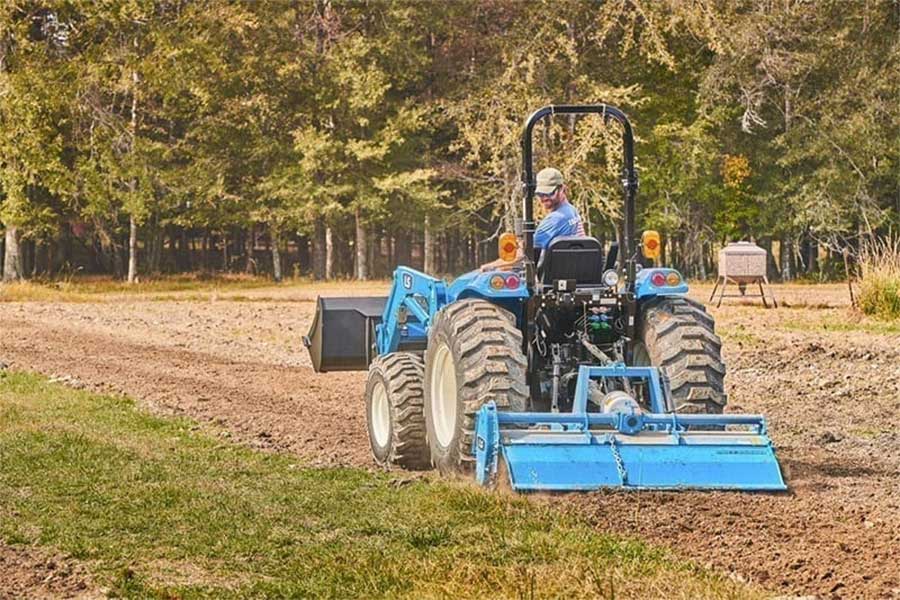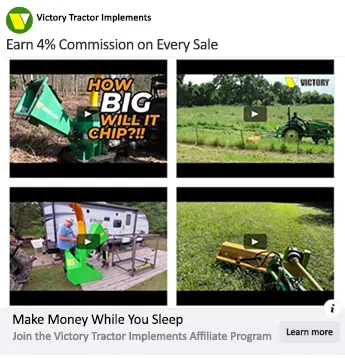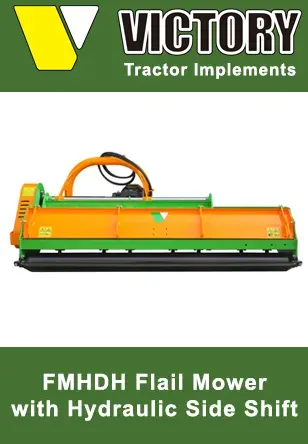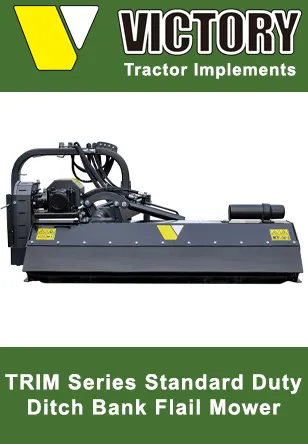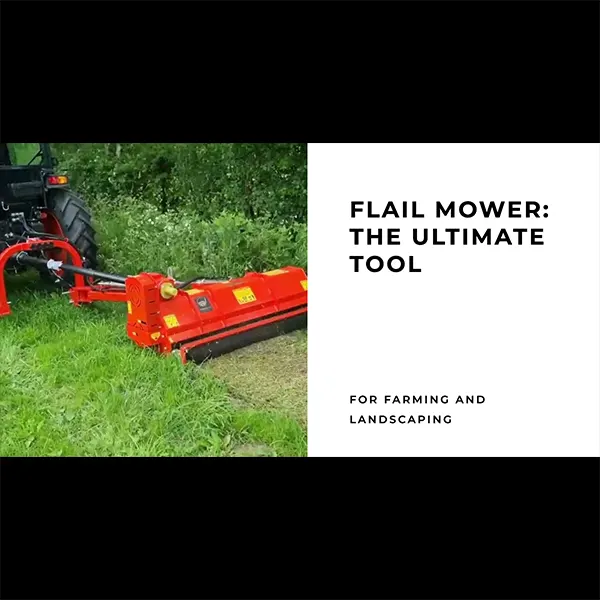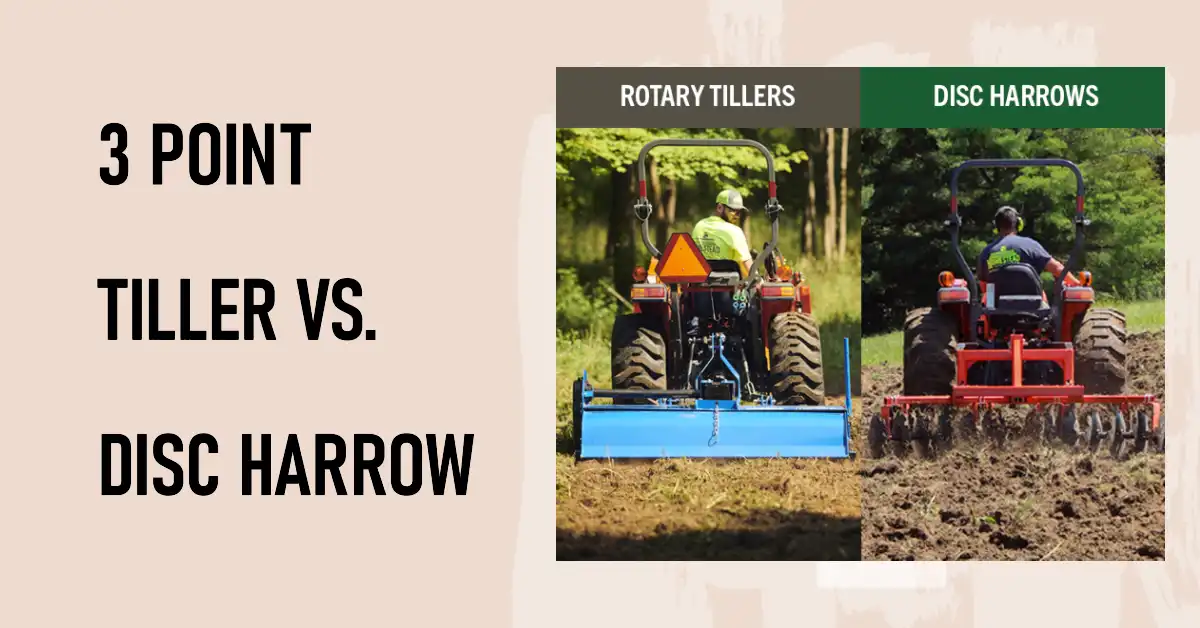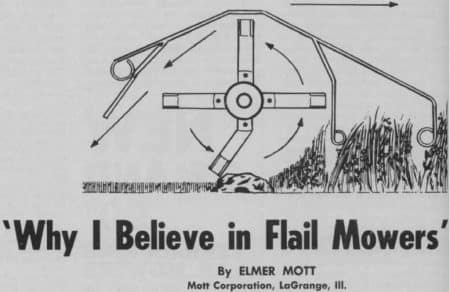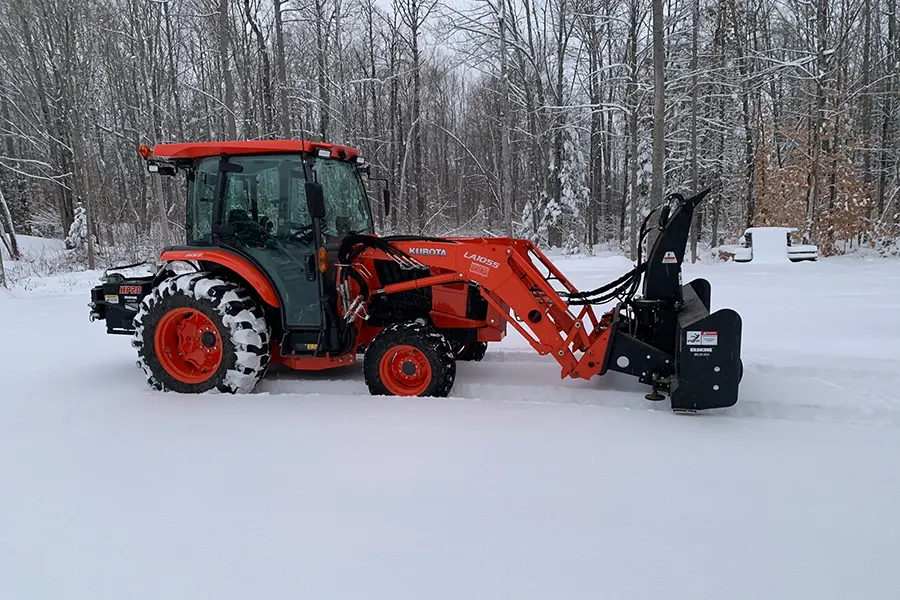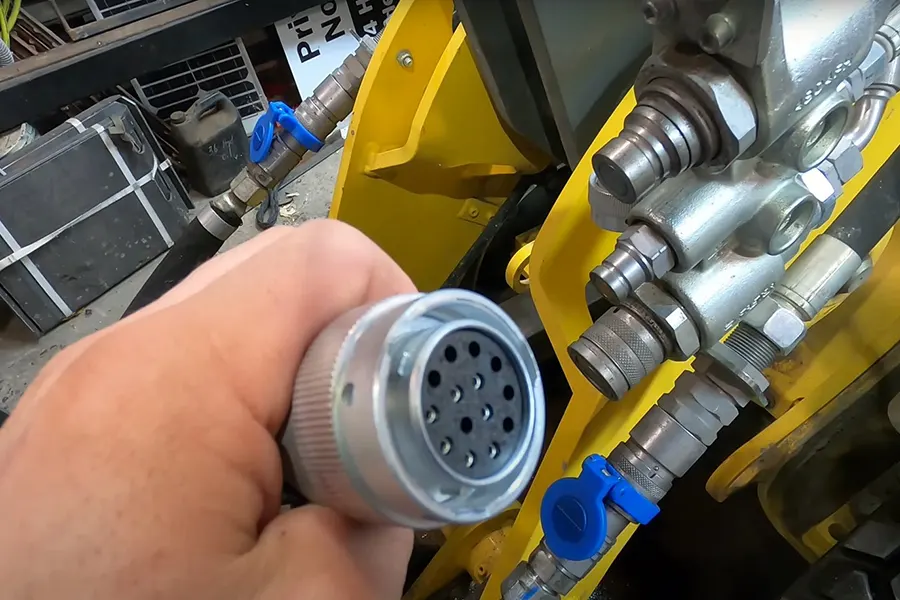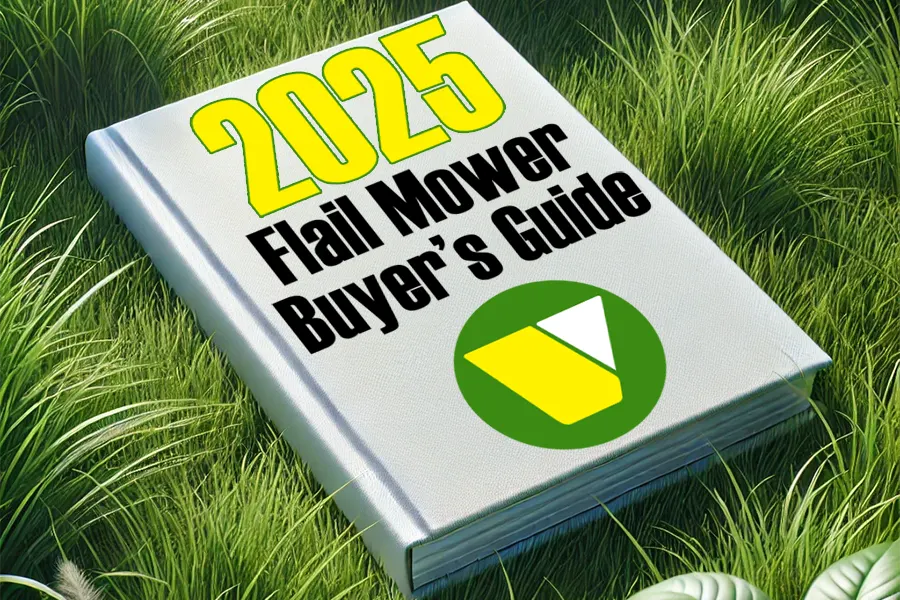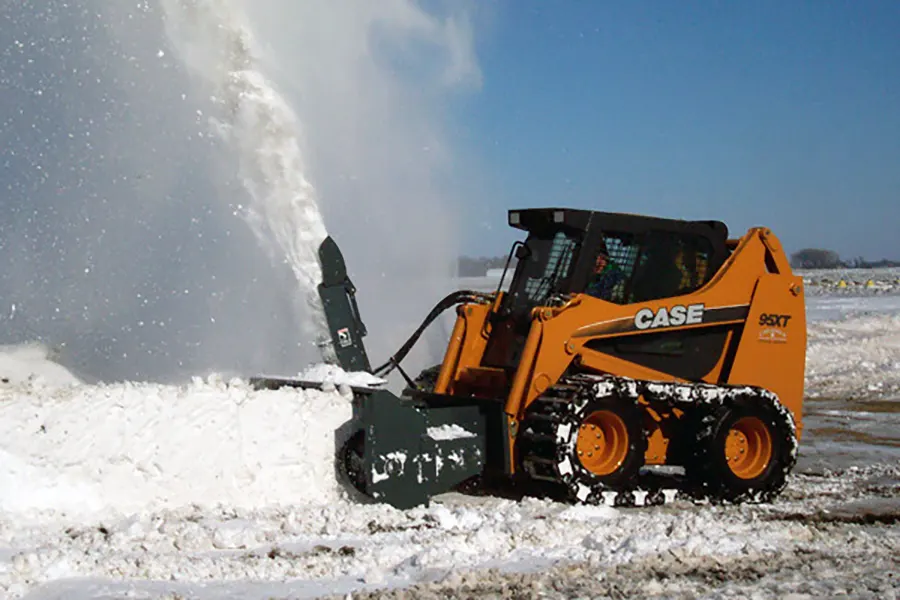Rotary Tillers by Victory Tractor
| Key Points | Details |
|---|---|
| Rotary Tiller Purpose | Used for cultivating, aerating, and stirring up soil. Ideal for maintaining vineyards and orchards, preparing seed beds, and mulching in cover crops and stubble. |
| Factors to Consider | Tractor HP, number of blades, tilling width, forward/reverse tine, working depth, slip clutch compatibility, and offset capabilities. |
| Forward Tine vs Reverse Tine | Forward tine creates finer soil texture but doesn’t till as deeply, best for estate and large property cultivation. Reverse tine buries topsoil and residue at the bottom, producing a rougher soil texture and is best for large scale and commercial application. |
| Offset Tilling | Allows the tiller to extend a greater distance to the side of the tractor, enabling tilling closer to objects and obstacles. |
| Slip Clutch | Prevents damage to the shear bolts when hitting hard objects below the surface by allowing the PTO to slip. |
| Size of Rotary Tiller | Typically range between 48” to 84” in width. Working depth varies based on tiller size and tine direction. Most tillers have adjustable runners for depth control. |
Victory Tractor offers two distinct lines of Heavy Duty Tillers
Whether for planting crops or garden maintenance, a rotary tiller is a huge time saver. Designed for cultivating, aerating, and stirring up soil for a variety of landscapes including gardens, food plots, and other tillage needs, these versatile machines are a staple in any farmer’s playbook.
Already made your purchase and ready to get started? Head on over to Tilling 101: Victory Tractor’s step-by-step guide on How to Operate a Tractor Tiller
Overview
Primary purposes include maintaining vineyards and orchards, preparing seed beds for future harvest, and mulching in cover crops and stubble.
A well performing tiller should effectively produce a consistent mix of textured soil that is both loose and uniform in depth. The outcome is a fertile ground that maintains moisture and is protected against weathering and erosion.
Tractor HP, number of blades, and tilling width are three of the most important factors when determining the best fit for your subcompact or compact tractor.
Additional Considerations
Forward / Reverse Tine
Working depth
Slip clutch compatible
Offset capabilities
In-depth Guide: Key Considerations for Every Tractor Owner Before Purchasing a Rotary Tiller
Putting Your Tiller to Work
The difference between forward and reverse tine rotary tillers | John Deere Tips Notebook
Forward Tine
Creates a finer soil texture than reverse tine tillers however do not till as deeply. Can typically operate with less HP. Best suited for estate and large property cultivation.
Reverse Tine
Buries topsoil and residue at the bottom rather than on the surface. Typically requiring greater HP than forward tine with the ability to reach further into the ground and produce a rougher soil texture. Best suited for large scale and commercial application.
Offset Tilling
Offset (also known as side shift) tillers provide the operator with the flexibility to extend the tiller a greater distance to the side of the tractor. This offers the benefit of tilling closer to objects and obstacles such as fences, posts, trees, and perimeter lines with less time and effort required by the operator.
Slip clutch
A slip clutch helps prevent damage to the shear bolts which occurs when hitting hard objects that lay hidden below the surface. Instead (as the name implies) the PTO will simply slip until the obstacle in question is no longer a concern.
Size Guide
Most rotary tillers range somewhere between 48” to 84” (4-7 feet) in width. Usually, the width will be consistent with tractor size, whereas smaller tillers will pair well with subcompact tractors and gear up towards midsized tractors when comparing to heavy duty models.
Working depth varies based on tiller size and tine direction. Most tillers are equipped with adjustable runners that can be set to till at a minimum of 1” in depth and increase in increments of 1” to reach the desired outcome.
* detailed overview available in The Ultimate Rotary Tiller Guide
FAQ
What is a rotary tiller?
A rotary tiller is a farming tool used for preparing the soil for planting. It is designed for cultivating, aerating, and stirring up soil for a variety of landscapes including gardens, food plots, and other tillage needs.
What are the primary purposes of a rotary tiller?
The primary purposes of a rotary tiller include maintaining vineyards and orchards, preparing seed beds for future harvest, and mulching in cover crops and stubble.
What are the key factors to consider when choosing a rotary tiller?
The key factors to consider when choosing a rotary tiller are the tractor HP, number of blades, and tilling width. Other considerations include whether it has forward/reverse tine, working depth, if it’s slip clutch compatible, and its offset capabilities.
What is the difference between forward tine and reverse tine?
Forward tine creates a finer soil texture than reverse tine tillers but do not till as deeply. They can typically operate with less HP and are best suited for estate and large property cultivation. On the other hand, reverse tine buries topsoil and residue at the bottom rather than on the surface. They typically require greater HP than forward tine with the ability to reach further into the ground and produce a rougher soil texture.
What is offset tilling?
Offset tilling provides the operator with the flexibility to extend the tiller a greater distance to the side of the tractor. This offers the benefit of tilling closer to objects and obstacles such as fences, posts, trees, and perimeter lines with less time and effort required by the operator.
What is a slip clutch?
A slip clutch helps prevent damage to the shear bolts which occurs when hitting hard objects that lay hidden below the surface. Instead, the PTO will simply slip until the obstacle in question is no longer a concern.
What is the typical size of a rotary tiller?
Most rotary tillers range somewhere between 48” to 84” (4-7 feet) in width. Working depth varies based on tiller size and tine direction. Most tillers are equipped with adjustable runners that can be set to till at a minimum of 1” in depth and increase in increments of 1” to reach the desired outcome.

Victory Tractor Implements is proud to offer a wide range of products including flail mowers, wood chippers, rotary tillers, and backhoes, all designed to be connected directly to your tractor’s PTO for maximum efficiency and performance. In addition, we also offer winter equipment such as snow plows and snow blowers, designed for use with skid steers.
We source all of our equipment directly from the manufacturer and pass the savings on to our customers. As always, the team is standing by to answer any questions to assist with your decision. Victory support can be reached directly at (562) 534-8182 or sales@etractorimplements.com

